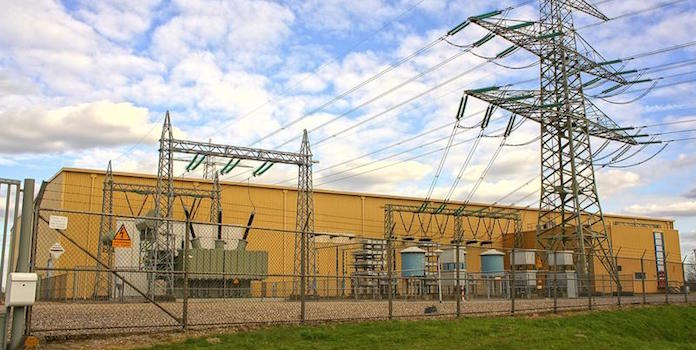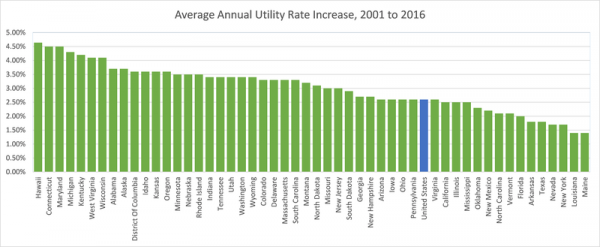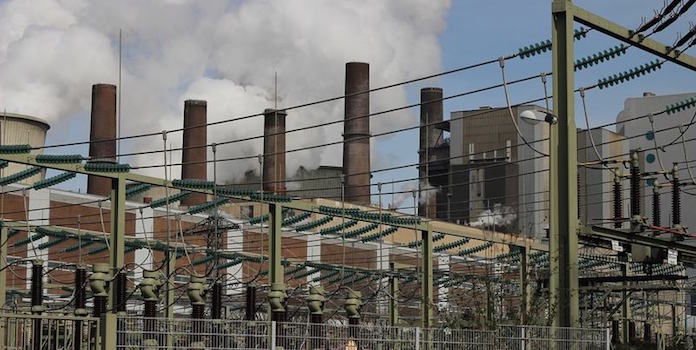Why Are Energy Prices Important to Your Solar Savings?

How much you save by going solar is directly related to your cost of electricity.
If you’ve received quotes or savings estimates from solar installers, you’ve probably noticed that your current electricity price is listed somewhere on the page. Next to or below that price, you’ll probably also see the phrase estimated utility rate increase, expressed as a percentage.
Typically, it’s something like “Current electricity price: $0.13 per kWh. Estimated utility rate increase: 2.5%”. If you’re like me, you’re probably wondering what this rate increase is, and if it’s really that important.
To keep it simple: Yes, it is!
Today, you’re getting a crash course in energy price increases. I know, I know. It sounds boring. But, by the end of this article, you’ll be able to rest assured knowing that your savings estimate is – or is not – an accurate look at your future savings. It’s that important!
Why are electricity price increases important?
Think about it. Why are you going solar? Yes, it might be to help the earth, but I bet saving money is a big part of your decision (statistically, saving money is the #1 reason homeowners go solar, p.4).
How does solar save you money?
Electricity is expensive. Purchasing a solar installation and producing your own free electricity over the next 25 years is cheaper than continuing to purchase electricity from your utility. The more your utility charges, the more you can save by avoiding them!
And this brings up an important point. There are two facets to electricity prices:
- The current price, or what you pay right now.
- The rate at which those prices increase.
If your utility charges $0.18 per kWh – much more than the national average – but only raises rates by 0.5% each year, your savings going solar are going to be small compared to a homeowner whose utility charges just $0.13 per kWh now, but raises rates by 5% each year.
In fact, let’s compare the two:
- Let’s say you installed a 5kW solar installation for $17,000. Your installation produces 6,000 kWh each year. Your utility charges $0.13 per kWh. Your utility raises rates 5% on average each year. At this rate, your total savings after 25 years would equal $12,073.
- If your utility charged $0.18 per kWh, but only raise rates 0.5% each year, your total savings would equal $9,037 – much lower than our example above!
While our increases above are a bit extreme (though not by much), this example illustrates an important point: Your utility’s average rate increase is important! To have an accurate savings estimate, you need to know and account for both the current price AND the rate of increase. The higher that rate, the more you can save!
Average rate increase for each state
Now that you know why rate increases are so important, let’s actually look at them! The US Energy Information Administration (EIA) has been tracking utility prices for decades, so it’s a great place to start if you want to calculate rate increases.
We’re going to look at data from the last 15 years (2001 to 2016) to calculate the average year-over-year rate increase in each state, using each state’s average electricity price each year.
Calculating the average rate increase is actually pretty easy. First, we’ll list out each year’s average price. Next, we’ll calculate each year’s percentage increase over the previous year. Lastly, we’ll calculate the average of all those yearly increases. (Spreadsheets help a lot in this process.)
Thankfully, we’ve already done the hard part for you, so here’s each state’s average utility price increase over the past 15 years, straight from the federal government’s data stash (click to enlarge):
As you can see, rates range from a high of 4.6% in Hawaii to around 1.4% in Louisiana and Maine. The national average (in blue) hovers right around 2.6%.
Just so you can use this article as a reference, here’s the actual rate increase for each state (in alphabetical order):
| State | Average Annual Rate Increase: 2001 to 2016 |
| Alabama | 3.70% |
| Alaska | 3.70% |
| Arizona | 2.60% |
| Arkansas | 1.80% |
| California | 2.50% |
| Colorado | 3.30% |
| Connecticut | 4.50% |
| Delaware | 3.30% |
| District Of Columbia | 3.60% |
| Florida | 2.00% |
| Georgia | 2.70% |
| Hawaii | 4.64% |
| Idaho | 3.60% |
| Illinois | 2.50% |
| Indiana | 3.40% |
| Iowa | 2.60% |
| Kansas | 3.60% |
| Kentucky | 4.20% |
| Louisiana | 1.40% |
| Maine | 1.40% |
| Maryland | 4.50% |
| Massachusetts | 3.30% |
| Michigan | 4.30% |
| Minnesota | 3.50% |
| Mississippi | 2.50% |
| Missouri | 3.00% |
| Montana | 3.20% |
| Nebraska | 3.50% |
| Nevada | 1.70% |
| New Hampshire | 2.70% |
| New Jersey | 3.00% |
| New Mexico | 2.20% |
| New York | 1.70% |
| North Carolina | 2.10% |
| North Dakota | 3.10% |
| Ohio | 2.60% |
| Oklahoma | 2.30% |
| Oregon | 3.60% |
| Pennsylvania | 2.60% |
| Rhode Island | 3.50% |
| South Carolina | 3.30% |
| South Dakota | 2.90% |
| Tennessee | 3.40% |
| Texas | 1.80% |
| The United States | 2.60% |
| Utah | 3.40% |
| Vermont | 2.10% |
| Virginia | 2.60% |
| Washington | 3.40% |
| West Virginia | 4.10% |
| Wisconsin | 4.10% |
| Wyoming | 3.40% |
The dangers of estimating future energy prices
Looking at utilities’ average rate increases to predict future rate increases is a crucial part of estimating your solar savings, but you need to be aware of an important caveat to all this.
Anyone who’s delved into the stock market probably knows that past performance does not guarantee future performance. Just because a utility raised rates X% over the last 10 years doesn’t mean they’re going to do the exact same thing over the next 25.
Utilities are facing challenges they’ve never dealt with before. Customers are using less and less energy. Homeowners and businesses are putting solar electricity into the grid at all times of the day. Even the utilities themselves are installing huge renewable energy plants.
These monolithic businesses are now moving into the great unknown, and while more and more customers using less electricity probably means higher rates for everyone else, no one can know for sure.
The solar industry’s system of calculating future electricity prices is probably pretty accurate and, of course, necessary. But just remember that, while these estimated rate increases are a very important factor in your solar savings, they are only that: estimates. In the end, we’re trying to predict future prices just like the stock market.
While installing solar is considered a very safe investment, it’s still an investment, meaning there’s a hint of the unknown in there. Caveat done. Warning over.
What do I do with this information?
All this info is great, but what the heck do you do with it? Well, to finish off our little article on electricity price increases, here are a few tips and questions to ask your installer to help you ascertain whether the estimated rate increase on your quote is accurate.
- First off, compare the rate to your state’s average increase above. If it’s vastly different, that’s a warning light.
- Ask your installer where the data comes from. Is it from a reputable source? They’ll likely say their company uses an internal algorithm or something like that, but that’s not a good enough answer. All the information we pulled above is publicly available from a federally-funded organization. That’s the level of respectability you’re looking for.
- Next, ask exactly what the data is based on. Is the rate increase based on a regional or state average, or is it specific to your utility? What years are they looking at? The installers I’m familiar with look at the last 10 to 15 years. If they’re looking at the last 50 years, that might not be the best estimate. You obviously want data that is as close as possible to your own current situation.
If you want to be as thorough as possible, you can even calculate your own average increase. Just get your utility’s residential rates over the last 10 years (ask your utility for them or dig through EIA data like we did), find the average increase year over year, then add them all up and divide by 10. (A spreadsheet like Microsoft Excel or Google Sheets really helps in this situation).
If you’ve asked all the questions above and everything seems above board, you can rest assured that your savings estimate is as accurate as possible (at least in regards to electricity prices – estimated solar production is an entirely different, though equally important, consideration).
Feeling good about electricity rates? Great! Now go out there, talk to a few installers, and put this info to good use! Have some lingering questions? Ask us in the comments below!



